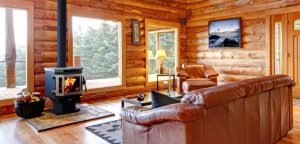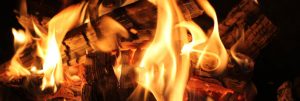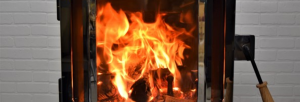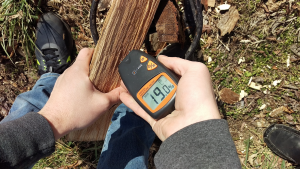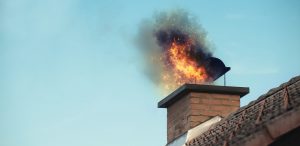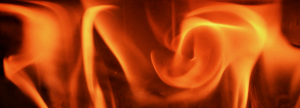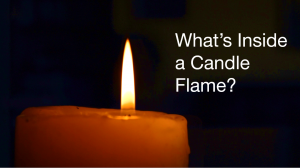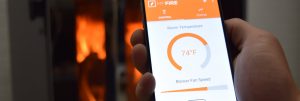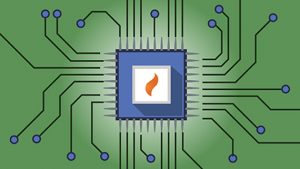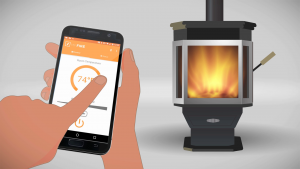A Wood Stove to Prevent Chimney Fires
As you relax in front of your fire, the last thing you are probably thinking about is your chimney. If you don’t pick the right wood stove before you light those winter fires, your enjoyment may be very short-lived. Dirty chimneys and old unsafe wood stoves can cause chimney fires, which destroy homes and injure people. Chimney fire safety is hugely important to the safety of your home.
According to the Chimney Safety Institute of America (CSIA) there are more than 22,000 chimney fires in the United States each year and chimney fires are a leading cause of house fires.
What is a chimney fire?
Chimney fires occur when creosote, the residue from wood burning stoves, accumulates on the inner walls of a chimney. This creosote is highly combustible and when it builds in sufficient quantities and the internal temperature of the chimney is high enough, the result could be a chimney fire.
What does a chimney fire look like? According to a wood burning stove safety PSA from the CSIA:
“Chimney fires can burn explosively – noisy and dramatic enough to be detected by neighbors or people passing by. Flames or dense smoke may shoot from the top of the chimney. Homeowners report being startled by a low rumbling sound that reminds them of a freight train or a low flying airplane. However, those are only the chimney fires you know about.”
But the majority of chimney fires go undetected. These undetected chimney fires can cause damage to the chimney structure that makes your home more vulnerable to a catastrophic chimney fire.
The video below shows a live chimney fire demonstration to show you how important chimney fire safety really is (source: CSIA):
How to prevent chimney fires
There are only two ways to prevent chimney fires: take away the fuel and take away the match. For chimney fires, the fuel is the creosote and the match is an overly hot fire in your wood stove, also called an over-fire. MF Fire’s Catalyst places an emphasis on wood burning stove safety, which is why it’s the first safe wood stove to solve both parts of the chimney fire equation.
Less Creosote
All wood stoves produce some smoke, and this smoke can accumulate in the chimney as creosote. Catalyst is an ultra-clean wood burning stove and produces far less soot and smoke than traditional wood stoves, which can proactively prevent chimney fires. Catalyst is so clean that it won the MIT Clean Energy Prize and back-to-back wood stove low emissions prizes at the Wood Stove Decathlon and Next Generation Wood Stove Design Challenge.
No Over-fire

The Catalyst smart app not only works to prevent over-fire, it also alerts you when one may be happening
Even the most experienced wood stove users sometimes over-fire their stoves. Over-firing occurs when too much wood is loaded or the fire receives too much oxygen, frequently because a damper or a catalytic converter bypass is left open. Over-firing damages your stove, weakening and warping it’s metal. The extra hot gas vented from an over-fired stove can, in turn, ignite the creosote buildup in your chimney and cause a chimney fire – the most dangerous situation for any wood stove owner.
Fortunately, MF Fire’s Catalyst is the leader in wood burning stove safety. It comes with an advanced safety system that automatically prevents over-fire before it occurs. In traditional wood stoves there is no way to detect when over-firing is occurring. In Catalyst, we added real-time monitoring inside the wood stove that detects when over-firing is about to occur triggering the stove to automatically regulate the fire back to a safe level. The Catalyst Smart App also notifies the owner with a simple alert of the event. This advanced system is the only solution on the market that proactively stops over-firing, which can prevent chimney fires before they start. The Catalyst actually proactively promotes chimney fire safety!
Demand a safe wood stove
If you are using an older wood stove, but are considering upgrading your stove, demand a safe wood stove that can proactively prevent chimney fires. The Catalyst has the chimney fire safety benefits allow you to comfortably and safely get the most out of your stove experience. Learn more here about wood burning stove safety and the benefits you deserve in a modern, safe wood stove.

